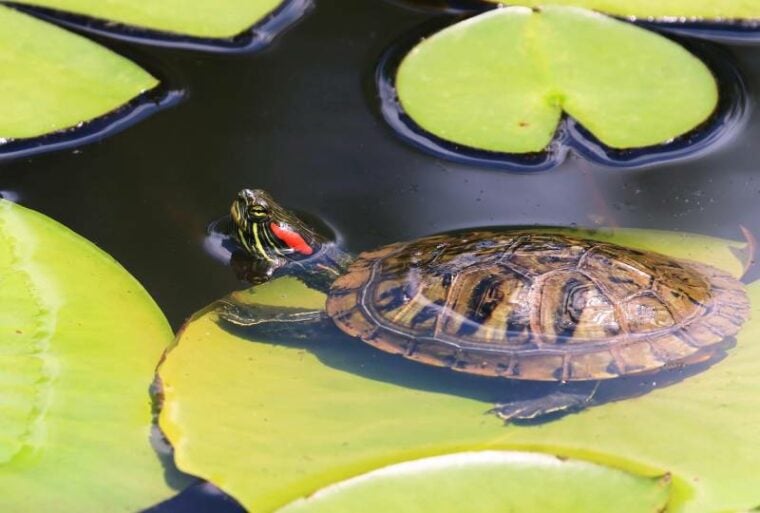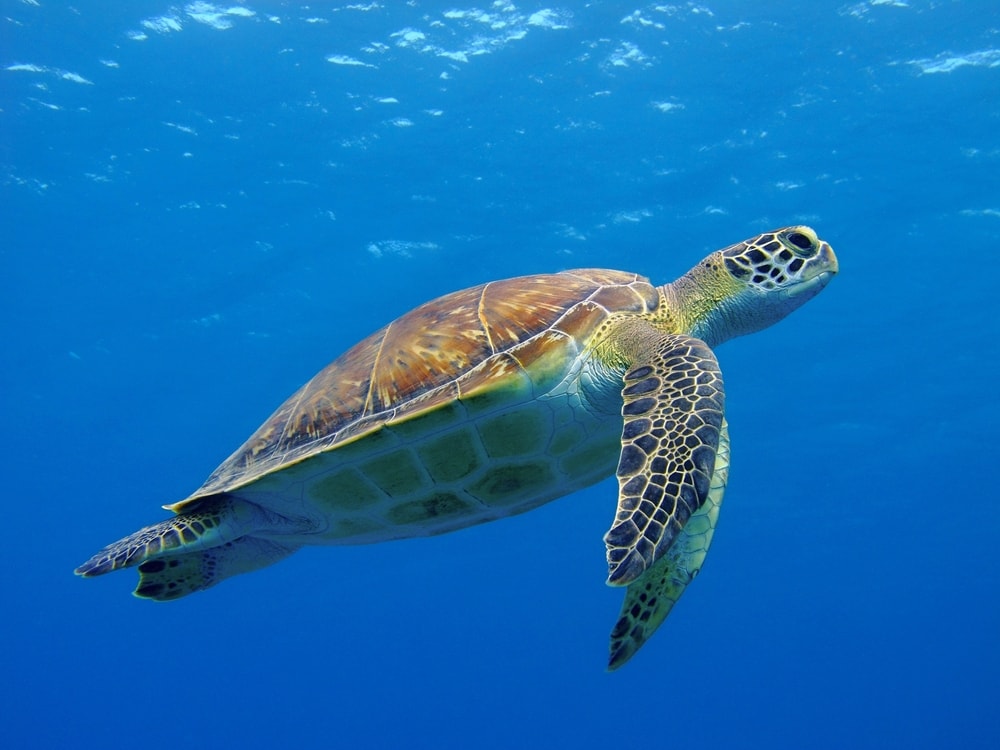
Click to Skip Ahead
Thanks to the “Tortoise and the Hare” fable, everyone knows that tortoises aren’t particularly fast on the ground. But what about turtles? What happens when you get a turtle or tortoise in the water? How fast can they swim? Can all turtles swim?
The average swimming speed of turtles can vary depending on the species and their age. Generally, sea turtles are faster swimmers than freshwater turtles. Overall, the average turtle swimming speed is 1-2 miles per hour. However, some species of turtles can reach much faster speeds. Read on to learn everything you’ve ever wanted to know about turtles and their swimming capabilities.
How Fast Do Semi-Aquatic Turtles Swim?
Semi-aquatic turtles are those that spend time both in and out of the water. Popular species commonly kept as pets include Red-Eared Sliders and Spotted Turtles.
Red-Eared Sliders are excellent swimmers and often sleep underwater at night. They have partially webbed feet that can be withdrawn inside their shells alongside their head and tails.
Spotted Turtles are not known for having strong swimming skills, so they typically stick to shallower waters. Hatchlings, however, are primarily aquatic, leaving the water only to bask.
Unfortunately, there doesn’t appear to be any information available regarding the swim speed of these species.

How Fast Do Sea Turtles Swim?
Sea turtles don’t swim very fast and certainly won’t be winning any swimming races. They mostly travel between 1.7 to 6.2 miles (2.8 to 10 km) per hour, though there are some speed variations between each species.
The Leatherback Sea Turtle, for example, can swim as fast as 22 mph (35 kph), and the Green Sea Turtle can accelerate in bursts of up to 22 mph. It’s important to note that these are not their cruising speeds; sea turtles can only reach such high speeds for short periods, such as when they are fleeing from an attack.
Why Do Sea Turtles Swim So Slowly?
There are several theories as to why sea turtles swim so slowly.
One study suggests their slow cruising speed could be related to their lower resting metabolic rate.1 Their drag coefficients will also likely affect their swim speed because they have a carapace (shell) which makes them different from faster and more streamlined aquatic mammals.
A sea turtle’s biological composition can also affect its speed. For example, their front flippers help them swim, while their back flippers act as rudders, allowing them to steer through the water. This means that the sea turtle only uses two limbs for propulsion when swimming, which doesn’t translate to high speed.

Do All Turtles Swim?
The term “turtle” is an overarching name that includes turtles, terrapins, and tortoises. You may also stumble across the term “chelonian”, which refers to various reptiles of the order Chelonia, including turtles and tortoises.
Significant differences exist between these three groups, and even among the species within the groups. The distinction comes from what habitat they have adapted to live in; however, the terminology differs in some countries. Depending on where you live, “turtle” could refer to all species under the order or only apply to marine species. That said, several commonly accepted distinctions exist between tortoises, turtles, and terrapins.
Tortoises always live on land as they are not equipped for water. Their feet are padded, stumpy, and clawed for walking on land.
Marine turtles spend most of their lives in the sea, returning to the land when it is time to lay eggs. Sea turtles have long and paddle-like flippers for swimming. They cannot retract their limbs into their shells. Their hind flippers act as rudders, directing the turtle as it swims.
Terrapins are the semi-aquatic, freshwater version of turtles. They have webbed feet for swimming and claws for walking on land.
Comparing Turtle Speeds to Other Animals
| Animal | Average Speed | Top Speed |
| Leatherback Sea Turtle | 6 mph | 22 mph |
| Loggerhead Sea Turtle | 1 mph | 15 mph |
| Sailfish | 30 mph | 68 mph |
| Penguin | 4–7 mph | 22 mph |
| Walrus | 4.3 mph | 21.7 mph |
| Human | 2 mph | 5 mph |
Final Thoughts
Most aquatic and semi-aquatic species have webbed feet and claws that they rely on to move them forward in the water. Sea turtles, who spend most of their lives in the water, are equipped with paddle-like flippers that allow them to move and steer themselves in the water. Tortoises are land reptiles and are not equipped with flippers or webbed feet, so they cannot swim.
Regardless of species, turtles generally aren’t fast swimmers, even those that live in the water full time.
Featured Image Credit: David Byron Keener, Shutterstock








